Philosophy and the City
Philosophy and the City
Interdisciplinary and Transcultural Perspectives
Edited by Keith Jacobs and Jeff Malpas

London New York
Published by Rowman & Littlefield International Ltd.
6 Tinworth Street, London, UK, SE11 5AL
www.rowmaninternational.com
Rowman & Littlefield International Ltd.is an affiliate of Rowman & Littlefield
4501 Forbes Boulevard, Suite 200, Lanham, Maryland 20706, USA
With additional offices in Boulder, New York, Toronto (Canada), and Plymouth (UK)
www.rowman.com
Selection and editorial matter 2019 by Keith Jacobs and Jeff Malpas.
Copyright in individual chapters is held by the respective chapter authors.
All rights reserved . No part of this book may be reproduced in any form or by any electronic or mechanical means, including information storage and retrieval systems, without written permission from the publisher, except by a reviewer who may quote passages in a review.
British Library Cataloguing in Publication Data
A catalogue record for this book is available from the British Library
ISBN: HB 978-1-78660-459-0
PB 978-1-78660-460-6
Library of Congress Cataloging-in-Publication Data Available
ISBN: 978-1-78660-459-0 (cloth : alk. paper)
ISBN: 978-1-78660-460-6 (pbk. : alk. paper)
ISBN: 978-1-78660-461-3 (electronic)
 The paper used in this publication meets the minimum requirements of American National Standard for Information SciencesPermanence of Paper for Printed Library Materials, ANSI/NISO Z39.48-1992.
The paper used in this publication meets the minimum requirements of American National Standard for Information SciencesPermanence of Paper for Printed Library Materials, ANSI/NISO Z39.48-1992.
Printed in the United States of America
Acknowledgements
We would like to acknowledge the work of the contributors to this volume and thank them for their participation. We are also grateful to Sarah Campbell at Rowman & Littlefield International for suggesting the idea of this volume, and together with her colleague, Rebecca Anastasi, for the patience and continuing support without which the project would not have been brought to completion. Our thanks also go out to Adam Ousten for his invaluable assistance in preparing the manuscript for publication. The project benefitted from the assistance provided to Keith Jacobs by the Australian Research Councils Future Fellowship Award FT120100471 and to Jeff Malpas by the Australian Research Councils Discovery Grant Award DP160103644.
Introduction
On the Philosophy of the City
Keith Jacobs and Jeff Malpas
Historically, at least in the European tradition, philosophy and the city are inextricably linked. Philosophy begins in the cityin the city-states of Classical Greece. This is no accident, since philosophy also has its origins in discourse and conversation, in the free exchange of ideas between human beings.
Yet although philosophy begins in the city, the implications for philosophy, and for thinking, of this beginning are seldom explored. This is an especially important question for our own highly urbanized modes of living in which the city is the context in which most of us live and so in which most of our thinking takes place. The United Nations estimates that, by 2015, 68 percent of the worlds population will live in cities, and already in 2018, the percentage stands at 55 (United Nations Department of Economic and Social Affairs 2018). Moreover, not only is the city increasingly the main locus for human habitation, but it is also the place that, even apart from the distribution of population, is determinative of much of the cultural, social, economic and political life of the contemporary world. The worlds cities are the centres of the worlds decision-making, of the worlds economy, of its political, social and cultural development. It is also in the city that many of the challenges of the contemporary world come most forcefully to the fore.
If the city is demanding of philosophical attention, it is a direct consequence both of the centrality of the city to human life as a life lived with and among others, and of the way the collectivity of human life is now explicitly played out within and in relation to urban contexts. Consequently, the idea of some form of philosophy of the city is not just the idea of a mode of thinking that aims to address a single phenomenon set off from others, but rather a mode of thinking that aims to address that which fundamentally conditions the phenomenon of human existence, both in general and in the historically specific context of modernity, the latter being essentially urban and urbanizing. The inquiry into the city thus follows from the character of human life and existence as inextricably tied to place and situation (see Malpas 2018; Benjamin 2010), not only because of its inevitable spatialization and materialization, but also because the being of the human is political (a point most famously made by Aristotle in his talk of the human as a political animal [1984, 1253.a2]). To say that the being of the human is political is to say that it is of the polis it is a being-with and together, a being in-commonalityand so the city appears as the place of human being. The historical changes in the character of the city that are part of the development of modernity thus take on a special significance because they are changes in the underlying structures in and through which human life and existence is formed and shaped. On this basis, engaging with the city philosophically means the opening up of a mode of inquiry that asks both after the nature of the city itself and the modes of life and existence that the city enables. This involves not only what emerges within the physical bounds of the city, but also that which arises in the larger spacewithin the city or without, materially or conceptuallyto which the city gives rise.
The philosophical engagement with the city is an engagement with the fundamental conditions of human life and existence. Moreover, such an engagement cannot result merely in a single philosophical account of the city. There can be no unique philosophy of the city any more than there can be one city that is the model for all cities or for the modes of life the city enables. The exploration of any philosophy of the city must thus be an exploration of the multiple lines of thinking that the city opens up and that are opened within it. And at the same time as the city presents itself as an object of inquiry, although one whose faces and forms are many, it also appears as the domain within which the inquiry into modes of human life and existence, and their contemporary realization, are inevitably played out. The city is both object and field, both conditioned and conditioning, both product and producing. An important consequence of this is that the philosophical engagement with it cannot remain merely within the disciplinary bounds of contemporary academic philosophy (bounds that are, in any case, nowadays, increasingly under pressure).
On the one hand, the engagement with the city must be philosophicalthat is, it must engage reflexively and critically with that which is fundamental to our situatedness, especially our contemporary situatedness, and to the very situatedness of that engagement and yet on the other hand it cannot only be philosophical, which is to say that it must engage with the reality of the city as a social, political, economic, material, spatial, environmental and topological phenomenon. This has indeed been characteristic, we would argue, of almost all of those attempts at genuine philosophical engagement with the city that have occurred in the pastand especially so in the work of such as Georg Simmel, Walter Benjamin, Henri Lefebvre and even, perhaps, Iris Marion Young. Inasmuch as such engagement centres on the city, so it often appears as nevertheless situated not at the centre, but rather towards the edges of philosophy as a discipline, in, as it were, the philosophical suburbs (see, for instance, the varied set of classic to contemporary materials that constitute the basis for the philosophy of the city as envisaged in Meagher 2008). Perhaps this shows how awkward philosophy has often found the city, and sometimes too how awkward the city has found philosophy, but perhaps it also reflects the difficulty philosophy has had in engaging with place and situatedness as such (something partly explored in Casey 1997).
Next page
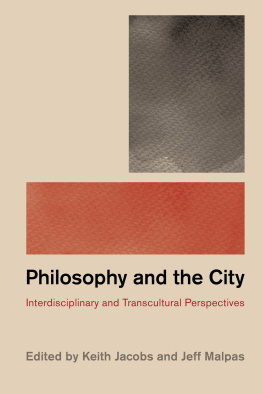


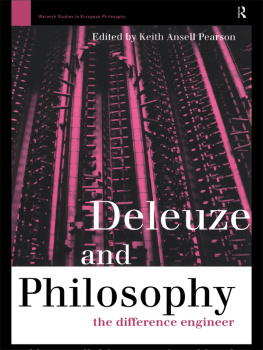
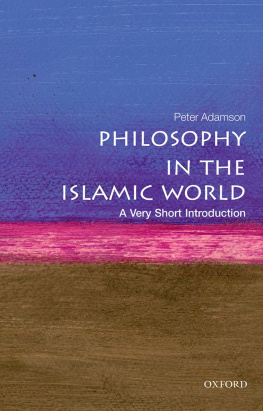
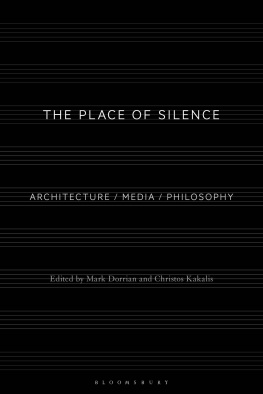
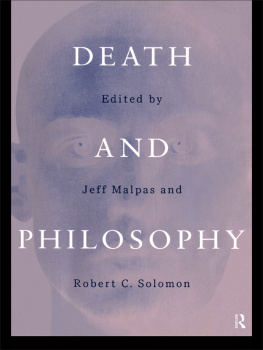

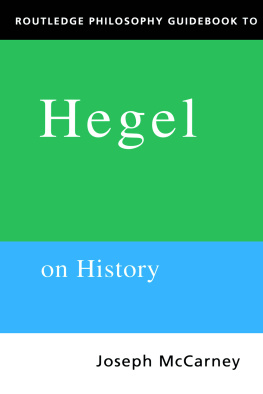
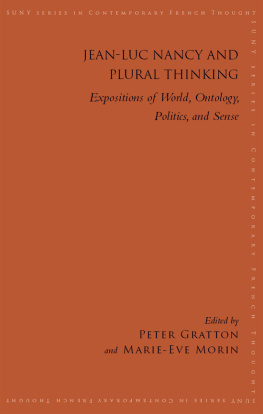


 The paper used in this publication meets the minimum requirements of American National Standard for Information SciencesPermanence of Paper for Printed Library Materials, ANSI/NISO Z39.48-1992.
The paper used in this publication meets the minimum requirements of American National Standard for Information SciencesPermanence of Paper for Printed Library Materials, ANSI/NISO Z39.48-1992.